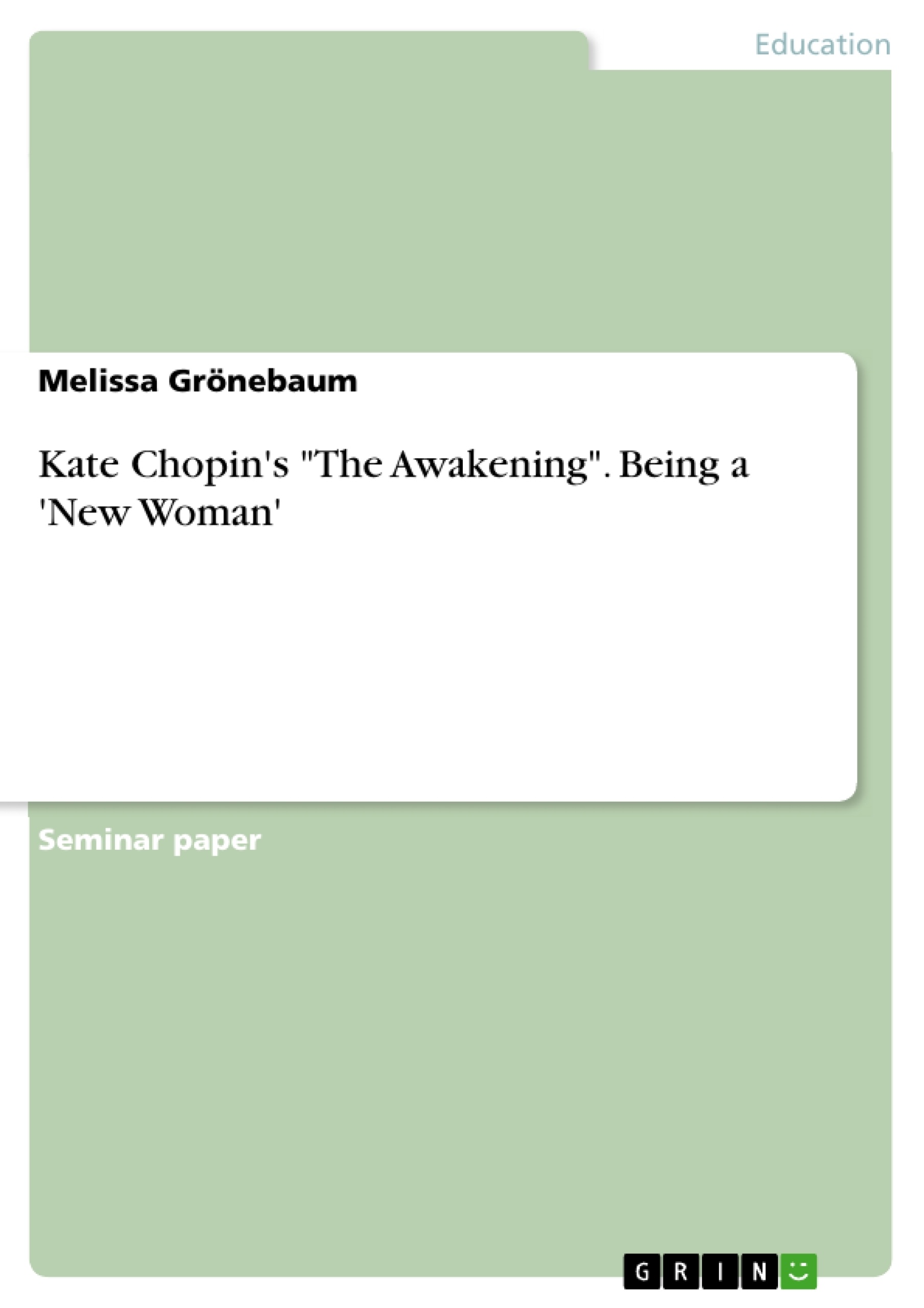Kate Chopin’s “The Awakening”, which is today seen as an “important early feminist text”, [hungry minds], was published for the very first time in 1899. Many readers, mostly men “who wished women would remain at home” [book: criticism], were shocked how Chopin, who was seen as a “regional writer” [book: criticism], could publish such a rebellious novel. Since female writers were supposed to “stick with ladylike subjects” [book: criticism] Edna’s story was not desirable, and men did not want to let women get any revolutionized ideas about ‘New Woman fantasies’.
The scandal about ‘The Awakening’ spoiled its chance to become popular at first and so it did not come to public attention till the 1960s, when feminist movements took place.
Today it belongs to the canon of important American Literature.
The novel ‘The Awakening’ contains the story about a respectable woman of the late 1800s. Between the centuries Edna Pontellier is trapped in New Orleans’ upper-class, the Creole society, with its old fashioned thinking. On the contrary, she is already having new society ideas – the ideas of a New Century’s Woman. During her summer stay at Grand Isles she collects a lot of new experiences and gets to know some new friends, for example Robert, with whom she falls in love with.
Table of Contents
- Introduction
- Women's role at the end of 19th century
- Edna's life
- Relationship between Edna and Léonce
- American Women among Creoles
- Change to a new life
- Friends and Possibilities
- Edna Pontellier and Kate Chopin
- Conclusion
- References
Objectives and Key Themes
This paper aims to explore the themes of self-discovery, gender roles, and societal expectations as they are presented in Kate Chopin's "The Awakening". The paper will analyze Edna Pontellier's journey towards finding her own identity and her struggle against the constraints imposed upon women in the late 19th century. Key themes explored in the text include:- The limitations placed on women in late 19th-century society
- Edna's pursuit of self-fulfillment and independence
- The conflict between societal expectations and individual desires
- The exploration of female sexuality and its implications
- The consequences of defying social norms
Chapter Summaries
The introduction discusses "The Awakening" as an early feminist text and examines the context of its publication, highlighting the initial shock and disapproval it received from a largely male audience. The chapter then introduces Edna Pontellier and her position as a woman trapped in the restrictive society of late 19th-century New Orleans. Edna's experiences at Grand Isle are presented as a turning point, leading her to question her role as a wife and mother and explore her own desires.
The second chapter focuses on the societal expectations placed upon women at the end of the 19th century. It explores the dominant views on women's roles, their limited rights, and the prevalent double standards. The text emphasizes the societal control over women's behavior and the expectations for them to be submissive, nurturing, and primarily focused on domestic life.
The third chapter delves into Edna's life, including her upbringing, her marriage to Léonce Pontellier, and her experiences as an American woman among the Creole society. This chapter highlights Edna's internal conflict between her desires for independence and her societal expectations. The chapter also examines how Edna's experiences at Grand Isle, particularly her interactions with Robert, contribute to her growing dissatisfaction with her life and her desire for change.
Keywords
Key terms and concepts explored in the text include: "The Awakening", Kate Chopin, Edna Pontellier, New Woman, feminism, gender roles, societal expectations, self-discovery, independence, freedom, sexuality, and societal constraints. The text focuses on the challenges and experiences of women in late 19th-century America, examining the constraints imposed on them by societal norms and exploring the consequences of defying those norms.- Quote paper
- Melissa Grönebaum (Author), 2010, Kate Chopin's "The Awakening". Being a 'New Woman', Munich, GRIN Verlag, https://www.grin.com/document/268376



